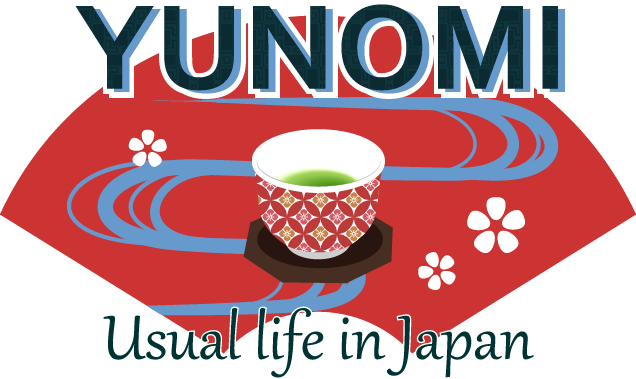Green tea may all look the same, but there are actually several kinds — each with its own aroma, flavor, and story.
In Japan, the basic method is to steam the leaves to stop oxidation, then roll and dry them for storage; small differences in steaming time, shading, roasting, and which parts of the plant are used lead to surprisingly different cups.
Sencha — The Bright Everyday Standard
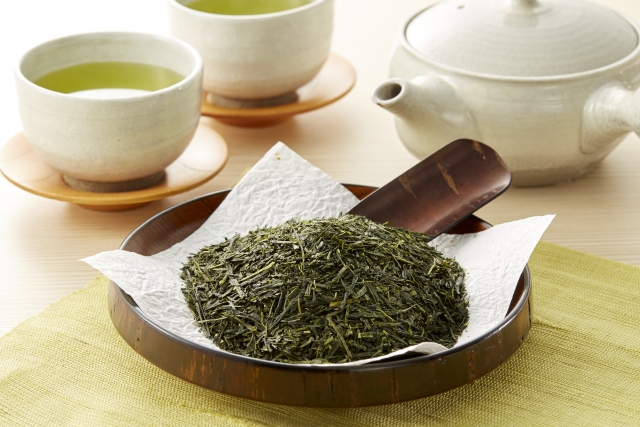
Japan’s daily staple since the Edo era, sencha is made by steaming fresh young leaves, then rolling and drying to seal in verdant aroma for casual, everyday drinking.
Flavor & brew in one line: Clear, refreshing, lightly bitter with a clean finish — brew at 70–80°C for about 1 minute (cooler water draws out sweetness, hotter emphasizes briskness).
Pairs with: Everyday meals, rice balls, light sweets.
Price & how often people drink it: Common grades hover around ¥1,000–¥2,000 / 100g, making it the most frequently purchased household tea throughout the year.
Fukamushi-cha — Deep-Steamed & Velvety

Developed in sun-soaked Shizuoka, fukamushi leaves are steamed two to three times longer than standard sencha, breaking cell walls for a saturated green liquor and plush, modern mouthfeel.
Flavor & brew in one line: Softer astringency, more sweetness, rich texture — brew at 70–75°C for 45–60 seconds (short because fine leaf particles extract fast).
Pairs with: Savory snacks, onigiri, simple fried items — its roundness balances salt and oil.
Price & how often people drink it: Typically ¥1,200–¥2,500 / 100g; popular in regions that favor a fuller body, often chosen as a “slightly special” daily sencha.
Gyokuro — Shaded Luxury, Umami-Forward

For roughly three weeks pre-harvest, gardens are shaded to preserve theanine and suppress catechins, yielding an umami-rich, low-bitterness liquor traditionally served to honored guests.
Flavor & brew in one line: Brothy, sweet-umami, silky with a gentle covered-leaf aroma — brew at 50–60°C for 90–120 seconds, sip slowly like a light consommé.
Pairs with: Rich or oily dishes (tempura, unagi, marinated sashimi) where concentrated umami “resets” the palate.
Price & how often people drink it: Often ¥2,500–¥6,000+ / 100g depending on region and grade; enjoyed occasionally or on weekends rather than as a daily staple.
Matcha — Whisked, Not Steeped
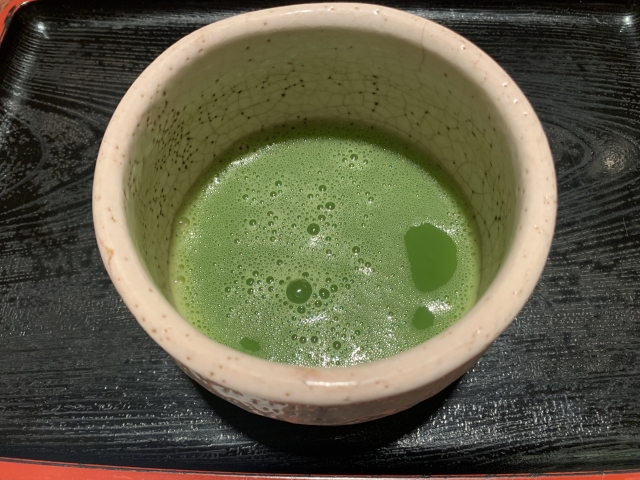
Shaded leaves are dried as tencha (without rolling) and stone-milled into fine powder; because you drink the whole leaf, matcha became the centerpiece of the tea ceremony for vivid color and focused flavor.
Flavor & brew in one line: Creamy, sweet-umami with gentle bitterness — use 70–80°C water, about 1–2 tsp, and whisk briskly until a fine froth appears.
Pairs with: Wagashi, dark chocolate, dairy (lattes or ice cream).
Price & how often people drink it: Culinary to ceremonial ranges vary widely from ~¥1,000 to ¥5,000+ / 30–40g; lattes and home baking are common weekly uses, while straight usucha/koicha is more occasional.
Genmaicha — Toasted Rice & Green Tea
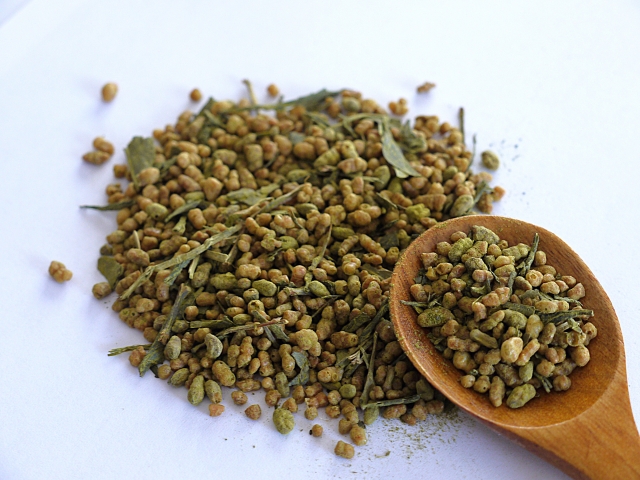
A blend of green tea (often sencha or bancha) with roasted brown rice, it began as a frugal everyday drink and is now beloved for warmth and food-friendliness.
Flavor & brew in one line: Mild body with a cozy, popcorn-like aroma — brew at ~80°C for about 1 minute for a round, comforting cup.
Pairs with: Ochazuke (tea over rice), pickles, simple home cooking.
Price & how often people drink it: Usually ¥800–¥1,800 / 100g depending on base tea quality; a frequent weeknight choice because it pairs seamlessly with home meals.
Kukicha (Twig/Stem Tea) — Light, Sweet & Gentle

Composed of stems and leaf veins sorted out during sencha or gyokuro processing; if sourced from gyokuro material it’s called karigane/shiraore and carries a whisper of shaded sweetness.
Flavor & brew in one line: Pale, sweet, very low bitterness — brew at ~80°C for 40–60 seconds for a soft, easy-drinking infusion.
Pairs with: Light sweets, tea-time snacks.
Price & how often people drink it: Around ¥800–¥1,800 / 100g; families enjoy it as a gentle daily tea, with karigane grades reserved for relaxed weekend breaks.
Konacha (Powdered/Small-Leaf Grade) — Bold & Practical
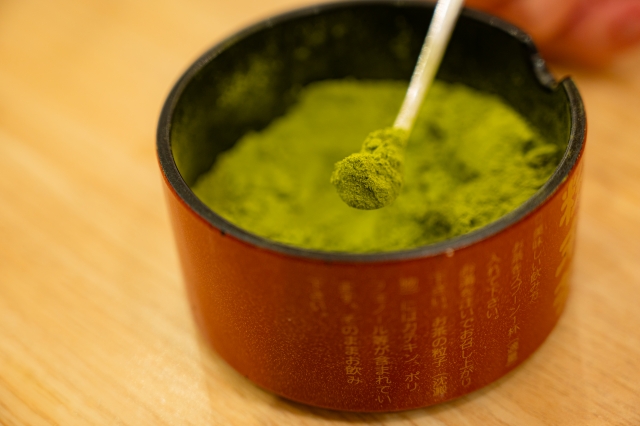
The fine particles and buds left after sorting sencha or gyokuro are collected as konacha; its quick, strong extraction made it the classic free “agari” tea at sushi counters.
Flavor & brew in one line: Robust, brisk, darker green cup — brew at 80–85°C for 30–45 seconds for lively flavor without harshness.
Pairs with: Salty snacks, sushi-night at home, dishes that welcome a punchy green counterpoint.
Price & how often people drink it: Great value at ~¥500–¥1,200 / 100g; popular for everyday “quick cups” and restaurant service.
Quick Pairing Map (Real-Life Use)
- Light & refreshing toppings / Ochazuke: Genmaicha / Daily Sencha (gentle companions).
- Rich & oily dishes (tempura, eel): Gyokuro / High-grade Sencha (umami cuts through oil).
Brewing Notes That Change Everything
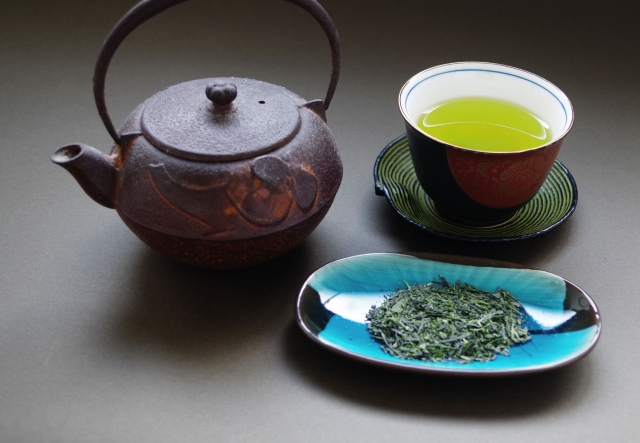
- Temperature steers taste: Lower = sweeter/umami; higher = brisk/bitter (especially with sencha and gyokuro).
- Deep-steamed extracts fast: For fukamushi, keep it short to avoid clouded bitterness.
- Kyūsu & water: Soft water highlights aroma; pour evenly across cups to balance strength.
- Leaf amount first: If a cup tastes thin, increase leaf before extending time to keep a clean finish.
- Re-steeps: Most Japanese greens shine for 2–3 infusions — shorten the second brew slightly, then lengthen the third.
Storage & Freshness (30-Second Crash Course)
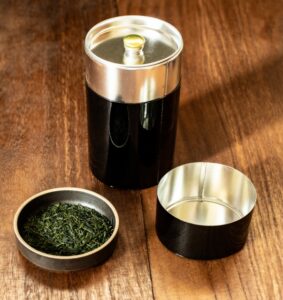
- Air, light, heat, moisture are tea’s enemies — use an airtight tin away from sunlight and the stove.
- Odor transfer is real: Store away from spices and coffee to preserve delicate aroma.
- After opening: Enjoy within weeks to a few months; matcha and fukamushi fade faster, so buy smaller amounts.
Related Reading on YUNOMI
The Culture of Green Tea in Japan: From Shincha Season to Everyday Hospitality
